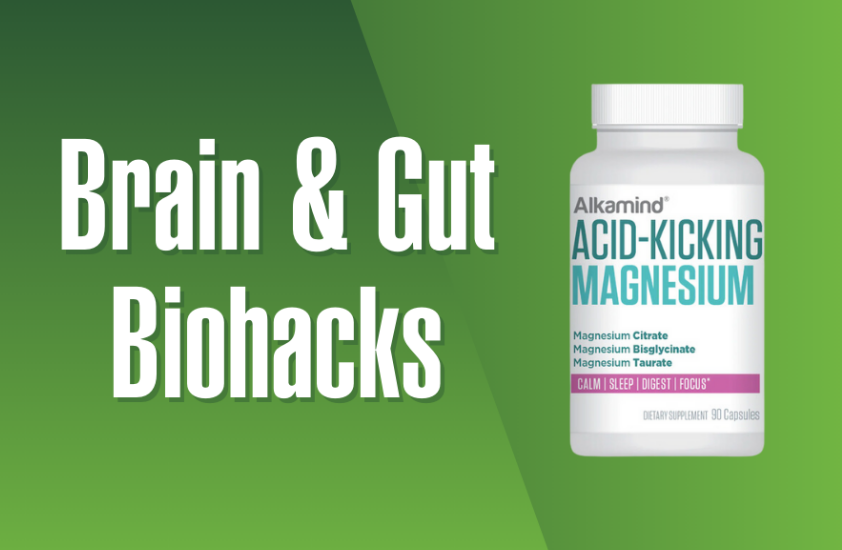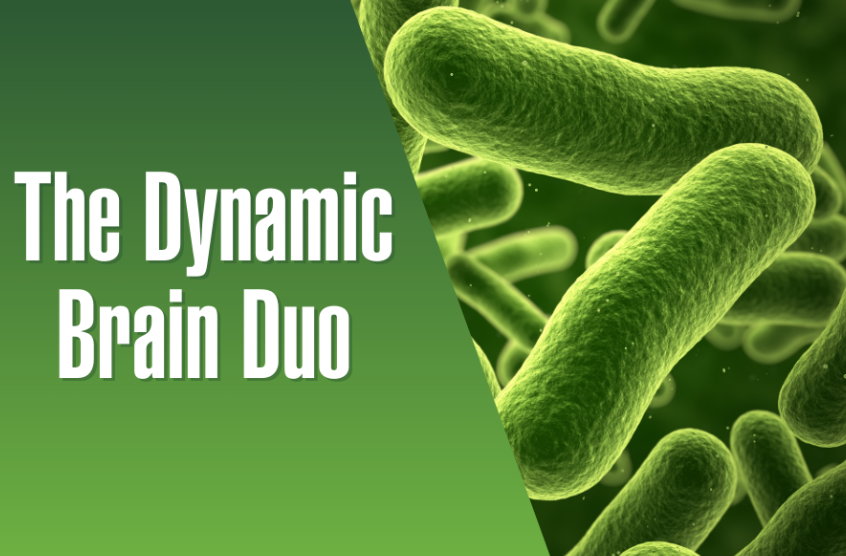
Everywhere I turn these days, someone is talking about eating plant-based.
It’s high time! I love to see it.
It’s better for our bodies, better for animals, and better for the planet. I really hope it leads to a change toward people eating less foods that fuel disease and more foods that fight disease instead.
But one of the questions that often comes up in discussions about plant-based diets or eating less meat is…How do I get enough protein?
This is a valid question, and today, I want to share the answer because it IS possible to get plenty of protein AND eat a primarily anti-inflammatory, plant-based diet at the same time.
With my 7 favorite plant-based proteins below, you will never have trouble getting enough protein while you keep it clean.
As you may know, I do NOT consider myself a vegetarian even though I eat a plant-based diet 99% of the time. And on the occasions when I eat animal products, it’s sustainably-caught fish and ethically-raised beef. Quality is most important so always go for grass fed, organic, and free-range.
I’m not here to tell anyone that you can’t have meat or not to eat it. My motto with everything I’m eating is always “good, better, best.” Do the best you can with the options available to you and make incrementally better choices. That’s the path to sustainable change.
Meat is okay in moderation if you don’t have ethical objections, but the fact of matter is meat is still acidic and requires a lot of energy for your body to break it down. So it’s important to remember that if you are going to have meat or fish, you want the portion size to be the SIDE SHOW and NOT the main event.
The fact is, most Americans are getting way too much protein!
The research shows Americans get twice the amount of protein that we really need, and excess animal protein is linked with osteoporosis, kidney disease, calcium stones in the urinary tract, and some cancers.
So what is the right amount of protein? My answer to this is everyone is different, and first and foremost, listen to your body and what your body tells you. The average American consumes about 100g of protein per day. But what do we need?
Well, at what stage in our life do we grow the fastest and therefore require the most protein? Babyhood. And get this, breast milk has only 3 to 5% protein, so in her infinite wisdom, that is all that Mother Nature chose.

So take a deep breath, if you are eating plant-based, you most likely don’t have to be worried about not getting enough protein. Your body is most likely getting all the protein that it needs.
Look at some of the largest and strongest mammals on earth that eat a plant-based, alkaline diet – cows, hippos, elephants, gorillas, and my favorite, the rhino. These are powerful animals and their bodies get all the protein that they could ever need.
If you aim for about 50 grams of protein per day – and remember, most Americans eat double this amount – you’ll be getting plenty even if you fall short here or there.
Use my list below of the top 7 plant-based proteins to get plenty of COMPLETE proteins, meaning they contain all 9 essential amino acids.
These other plant-based proteins are still very worthy of eating daily, even if they are not complete:
- Lentils – 18g per cup
- Tofu – 12g per 5 oz.
- Peas – 8g per cup
- Nut butters – 7g per 2 tbsp.
- Sunflower seeds – 6g per ¼ cup
- Spinach – 5 grams (g) per cup
- Cashews – 5g per ¼ cup
- Avocado – 5g per ½ cup
- Broccoli – 5g per cup
- Almonds – 4g per 2 tbsp.
- Dark green, leafy vegetables – 3g per cup
Complete Alkaline Protein #1: Chia Seeds
Protein per 2 tbsp.: 5g

Chia is one of my favorite foods and I use it all the time, especially with all of my running and marathon training as it is so versatile in what it can do.
Like all of the proteins on this list, it is considered a complete protein because it contains all 9 essential amino acids that the body needs.
Thanks to chia seeds blood-sugar stabilizing ratio of protein, fats, and fiber, they’re the perfect hunger-busting addition to your diet, and can help you lose inches around your waistline.
But that’s not all… Chia seeds are one of the highest plant-based source of omega-3 fatty acids, which research shows can decrease the risk of heart disease.
They are 50% omega-3 fatty acid, and 20% protein, which is why I consider chia one of nature’s most perfect foods.
They also contain more fiber than flax seeds or nuts. Chia is a powerhouse of iron, calcium, zinc, and antioxidants.
Aside from nutritional content, the best thing about these little seeds is that they form a goopy gel when combined with milk or water. This makes them fantastic for making healthy puddings, thickening smoothies, or replacing eggs in baking.
My tip to eat more chia: I add chia to every smoothie and green drink I make.
One of my favorite healthy desserts is chia pudding, which is so easy to make, and you can find endless variations of chia puddings in the Get Off Your Acid recipe books.
Complete Alkaline Protein #2: Quinoa
Protein per cup: 8g
Quinoa is not a grain like most people think, but actually a seed from a plant related to spinach, Swiss chard, and beets. So think of it more as a protein than your typical carb.
Quinoa comes to us from South America where the ancient Incas and the Indians of the Andes mountains cultivated and revered it, calling it “the mother grain.” Not only is quinoa higher in protein than other whole grains, but it provides a complete protein.
Quinoa is a brilliant food and one of my absolute favorites! It’s versatile and can be used to make breakfast porridge, soups, salads, and stir-fries. It’s a much better option compared to rice or other supposed “ancient grains.”
My tip to eat more quinoa: Quinoa works great with beans to create a well-balanced meal. You can mix it in the morning with some gluten-free oatmeal, or you can up you the flavor and nutrient content of your favorite green salad with a scoop of quinoa. I also love to use sprouted quinoa in anti-inflammatory granolas.
Complete Alkaline Protein #4: Hummus
Protein per 2 tbsp.: 3g

Hummus is a classic, and when it’s made fresh, not only is it packed with protein, it’s also alkaline.
Garbanzo beans or chickpeas are high in lysine, and tahini is a rich source of the amino acid methionine. Individually these foods are incomplete proteins, but when you combine the two together to make hummus, they create a complete protein.
Just be aware that not all store-bought hummus brands contain tahini, and they potentially can have a lot of other acidic ingredients. So as always, read the ingredient list carefully. Or better yet, make your own!
My tip to eat more hummus: Spread hummus onto sandwiches in lieu of mustard, mayo, and other spreads, dollop a spoonful or two onto salads and quinoa bowls, or use it as a dip for raw veggies.
Complete Alkaline Protein #5: Beans
Protein per cup: mung (14g) adzuki (17g) lentils (18g) navy (16g) black (15g) white (17g) kidney (15g)
Besides their obvious high protein count, here is why beans are so great… They are also high fiber and antioxidants, they are inexpensive if you are on a budget, and their shelf life goes a long way.
Beans contain iron, zinc, calcium, selenium, and folate and are low on the glycemic index, which makes them very alkaline and great for anyone with diabetes or pre-diabetes.
My tip to eat more beans: We add beans to most quinoa bowls, soups, and salads to make they more filling, not to mention add texture and flavor. The other way we use beans a lot is adding them to sauces and dips, like Clean Spinach Artichoke Dip and Alkaline Alfredo Sauce.
Complete Alkaline Protein #6: Ezekiel Bread
Protein per 2 slices: 8g
Ezekiel bread is made with sprouted healthy grains, which increase the bread’s fiber and vitamin content, and makes it much easier on your digestive system compared to most other breads. Some examples of the sprouted grains included are barley, beans, lentils, millet, wheat, and spelt.

It also contains an impressive 18 amino acids. This includes all of the 9 essential amino acids, making Ezekiel bread a complete protein, something most other bread products can’t claim.
I absolutely recommend Ezekiel bread as your new go-to sandwich base instead of any other bread. Yes, there is a small amount of gluten in Ezekiel bread, which I would call its only downside, but having 2 slices of this is a MUCH better option than most breakfast or sandwich alternatives out there.
My tip to eat more Ezekiel bread: Use Ezekiel bread any way you’d use traditional bread. It’s extremely versatile. You can have it as toast with some raw almond butter and cinnamon to top, OR you can have some Ezekiel toast with sliced avocado, a drizzle of extra virgin olive oil, cumin, sea salt, lime juice, cilantro, tomato, and jalapeño if you want a kick.
Complete Alkaline Protein #7: Alkamind Organic Daily Protein
Protein per scoop: 20g
Most plant-based protein powders are NOT complete proteins, so you really have to do your research to find one that is. Fortunately, we’ve done the work for you because our protein powder is 100% plant-based organic and also a complete protein.
Also unlike most other brands, Alkamind Organic Daily Protein has no artificial ingredients or sweeteners, no sugar, and 3 sources of healthy fat that will keep you full for hours.
It’s also the best tasting vegan protein powder you’ll find. That’s why Fitness Magazine called it “a superfood lover’s dream.” And Shape Magazine listed it in their “Top 10 Plant-Based Protein Powders That Don’t Taste Like Dirt.”
Reviewers rave about both flavors, Vanilla Coconut and Creamy Chocolate:
“My fav protein!! I have tried a lot of proteins that have been a disappointment! This one not only tastes good it blends well & no grit! Love the clean ingredients!” –Danielle H. (Verified Buyer)
“The chocolate protein is my favorite! I can drink it with just water and it tastes delicious or I can mix it with my plant based milk and it’s creamy like a chocolate milkshake. Best tasting protein! My 2 year old loves it. He begs me to make him a shake.” –Deanna J. (Verified Buyer)

My tip to eat more Alkamind Organic Daily Protein: In addition to adding to any smoothie, lots of Alkamind fans add a scoop to low-sugar desserts as both natural sweetener and a source of healthy fat and protein.
Blend one scoop of Creamy Chocolate flavor with a frozen banana and a cup of unsweetened almond or coconut milk for a craving-busting chocolate milkshake.
Try it today! You can buy one jar or Subscribe & Save 15%.
GET OFF YOUR ACID!
Dr. Daryl
 Skip to content
Skip to content




